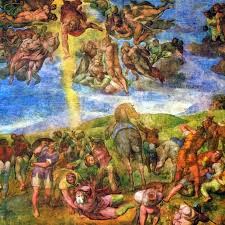One month ago we celebrated the birth of Jesus Christ. Today we celebrate the conversion of one of the most famous of Jesus’ followers, St. Paul. And yet, he started out as a persecutor of the Christian religion: “Now Saul, still breathing murderous threats against the disciples of the Lord, went to the high priest and asked him for letters to the synagogues in Damascus, that, if he should find any men or women who belonged to the Way, he might bring them back to Jerusalem in chains” (Acts 9:1-2).
And yet, Jesus chose him to spread the Good News when he
called to him: “Saul, Saul, why are you
persecuting me?” (Acts 9:4). Saul (Paul was
his Roman name) then responded: “Who are
you, sir?” (Acts 9:5). Jesus then
revealed himself: “I am Jesus, whom you
are persecuting” (Acts 9:5). Paul went
into Damascus and was baptized.
Baptized! The man who had just
come to arrest Christians became a Christian!
Paul would undergo many trials and suffer greatly for his change,
including death as a martyr. He founded numerous
Christian communities and wrote most of the New Testament through his letters.
But Paul never forgot his past or his role as a persecutor
of Christ. He acknowledged his own
salvation was due to the grace of God acting in his life. He offered the same message of the free gift
of God’s grace through the death and resurrection of Jesus Christ. Who do we know that may be attacking the
Church? Who do we know that may be challenging
us and our faith? It may be that God has
a great purpose in mind for that person.
Our prayers can be offered to bring about conversion of sinners so that
they too may offer glory to God as Paul did.









